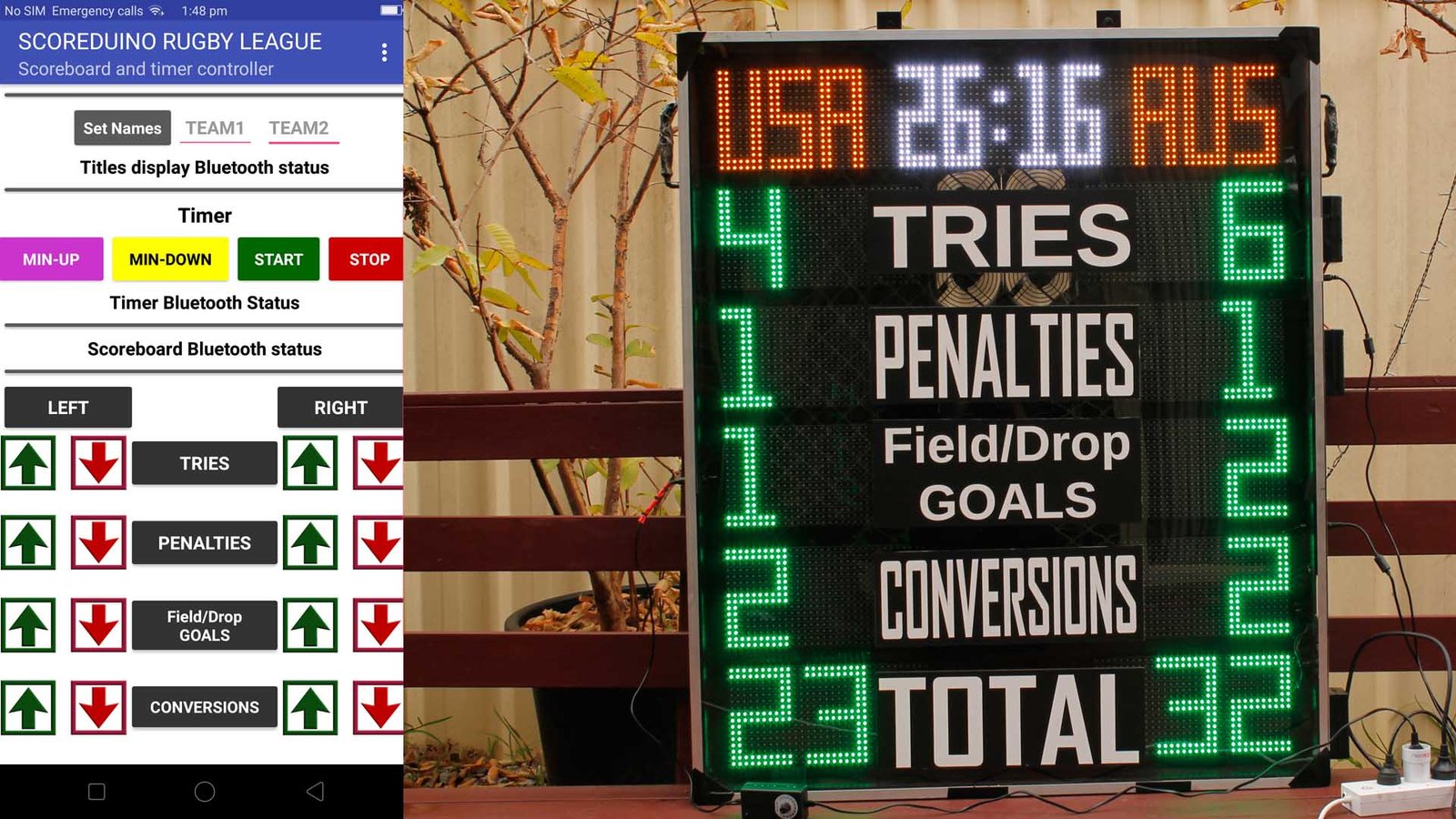We rent digital scoreboards for soccer, AFL, hockey, polo, netball, rugby league, tennis, and cricket
Contact us now– send email directly to scoreduino.com@gmail.com or send text message: 045 1746 024
In a rugby league scoreboard, the typical sequence of elements should reflect the logical order of how points are scored and understood by fans and players. Here’s the standard and most clear layout:
🏉 Rugby League Scoreboard Sequence
-
Tries (T)
-
Conversions (C)
-
Penalties (P)
-
Field Goals (F or FG)
-
Total (TOTAL)
Why this order?
-
Tries are the main way to score (4 points).
-
Conversions usually follow tries (2 points).
-
Penalties come from infractions (2 points).
-
Field Goals are less common but important (1 point).
-
Total gives the full score based on all the above.
Optional Abbreviations:
| Full Term | Common Abbreviation |
|---|---|
| Tries | T |
| Conversions | C |
| Penalties | P |
| Field Goals | FG or F |
| Total Points | TOTAL |
Let’s break down why this sequence makes the most sense for a rugby league scoreboard, both logically and practically:
✅ 1. Tries First
-
Why?
Tries are the primary scoring method in rugby league — worth 4 points.
Everything else (like conversions) often depends on a try happening first. -
Example: You can’t take a conversion unless you’ve scored a try.
✅ 2. Conversions Second
-
Why?
Conversions directly follow tries and are worth 2 points.
They are attempted after every successful try, so it makes sense to show them next.
✅ 3. Penalties Third
-
Why?
Penalty goals are worth 2 points and are standalone events, not linked to tries.
They often change the strategy or momentum of a game, but they are not as central as tries or conversions.
✅ 4. Field Goals Fourth
-
Why?
Field goals (drop goals) are worth just 1 point and are strategic — often used in tight matches.
They’re relatively rare, so they’re shown after the more impactful scoring methods.
✅ 5. Total Last
-
Why?
The Total score is what everyone really looks for — fans, referees, players.
It’s calculated based on all the above and should always be at the end for easy reference.
🧠 Think of it like this:
The order is designed around:
-
Game flow (what happens first → last)
-
Scoring impact (most points → least points)
-
Viewer clarity (logical reading and understanding)
If you reversed the order (like showing field goals first), it would confuse people because:
-
You’d be emphasizing a rare 1-point event over a frequent 4-point try.
-
You’d break the natural rhythm of the game’s progression.


Leave a Reply